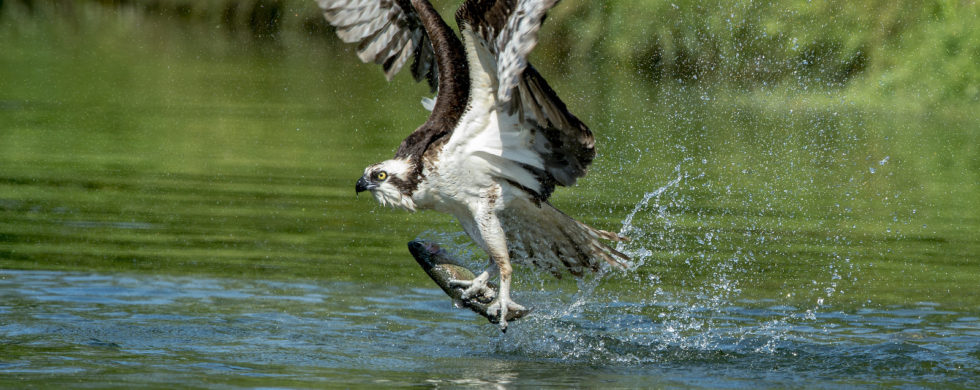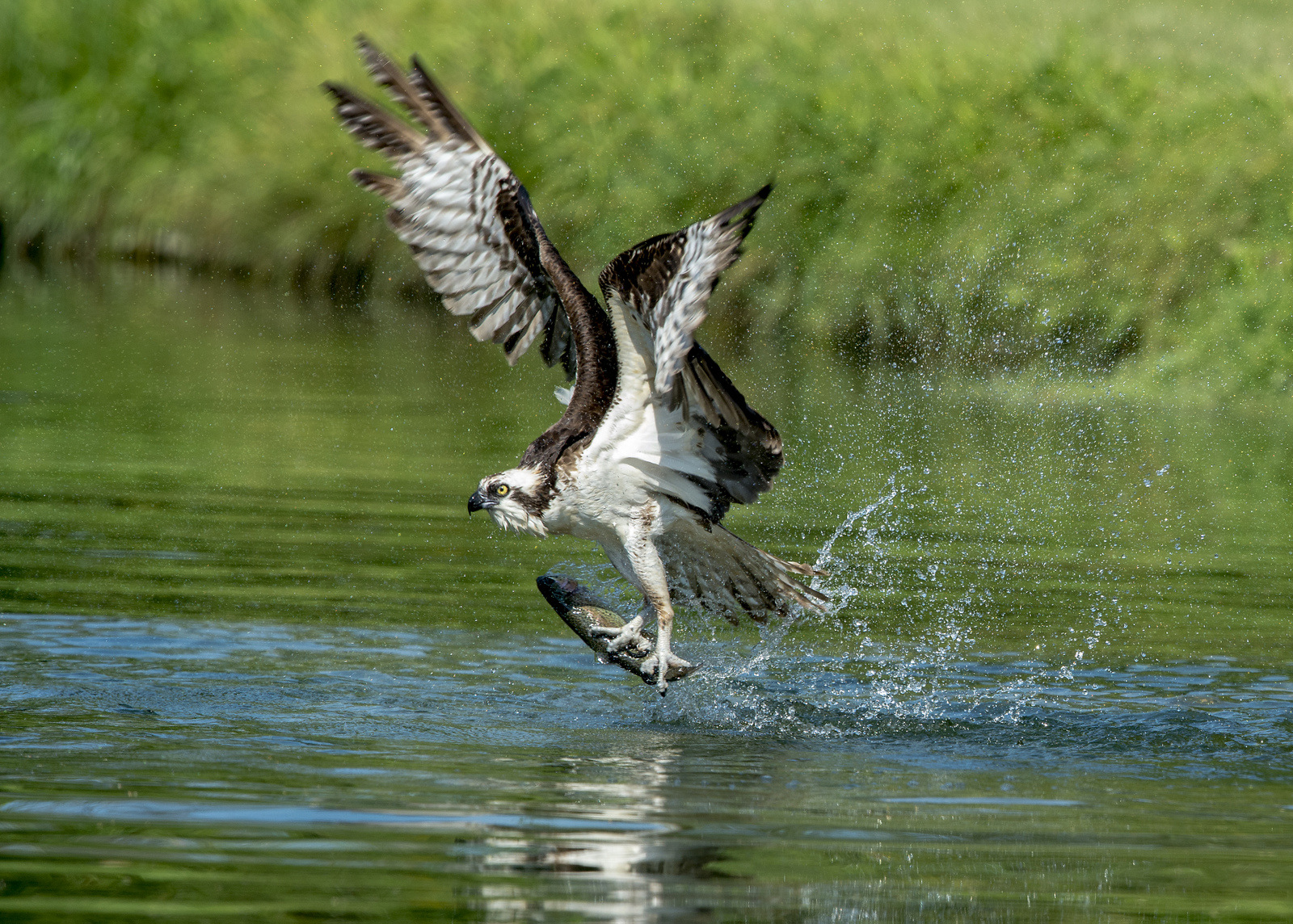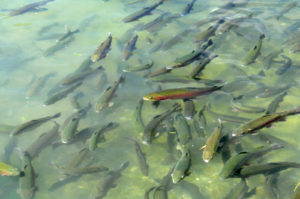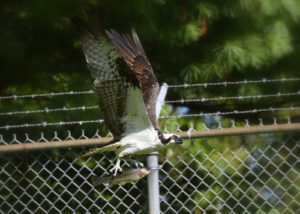
31
2017Gone Fish’n
Shot of the Month – March 2017
Here we see an Osprey doing what it does best — catching a fish. This was one of the first images I ever captured of an osprey in action. I have to confess however that this is not a completely “wild” setting. Let me explain.
A couple of years ago while living in Vermont I heard about ospreys that regularly visited a fish hatchery that was about an hour from where I lived. The hatchery had an assortment of holding tanks that held fish from uber small to quite big. The biggest fish, rainbow trout, in this case, were held in an outdoor pond. For an osprey, this was like shooting the proverbial fish in a barrel.
Initially, the osprey parents would stop by to catch a couple of fish each day to feed themselves and the kids. When the chicks were old enough to fly the parents would bring them to this pond to practice fishing. I heard about the spectacle and spent a couple of weekends sitting by the pond to see what I could catch. It was interesting watching the parents circling above as they called out to their offspring, seeming to implore them to give it a go. It was easy to distinguish the parents from the newbies — the parents would circle briefly and dive in with great confidence and efficiency. The kids, uh, not so much. They would start a dive and then abort. Come in for another try and pull up at the last second as they got close to the water. Eventually, after numerous false starts, they would dive in, occasionally catching a meal.
As for me, I had a grand ole time. I had a front-row seat and could see up close and personal how an osprey earned a living.
Ospreys are true piscivores — fish make up about 99% of their diet. Given their love of fish, osprey nests are usually found within 12 miles of a body of water. They typically fly about 30 to 100 feet above the water surface and use their exceptional eyesight to spot a meal. Osprey tend to prefer shallow bodies of water since it can only plunge about three feet under the water’s surface with its feet-first dives. These hawks are pretty good at what they do and usually catch a fish in 1 out of 4 tries. It takes an experienced adult about 12 minutes of hunting before making a catch.
The osprey’s feet are highly adapted to facilitate holding on to its slippery catch. Osprey can shift one outer toe to the back if needed to better grasp a fish. No other birds of prey can do that. Their feet also have barbed pads on the soles and the talons have backward-facing scales — all adaptions to help maintain a firm grip. To facilitate an efficient flight back to the nest or the preferred dining locale, an osprey will orient the fish headfirst to minimize wind resistance!
As they say, you can teach a man to fish, but he still won’t be as good as an osprey. Or something like that.
Until next month…
Here is a great video showing how osprey hunt:
Nikon D4S, Nikon 600 mm, f/8, 1/2000 s, ISO 800, -0.5 EV



